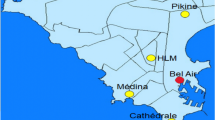Abstract
The technology development, population growth, development of metropolises and subsequent pollution are serious threats to the environment and public health. Therefore, monitoring and evaluation of various emissions and their sources, and also providing practical strategies of pollution reduction, are necessary to solve these problems. In this regard, the use of modern methods to predict the concentration of pollutants can improve decision-making and provide appropriate solutions. Tehran has been ranked as one of the most polluted cities in Iran. In this study, the meteorological monthly data were employed to achieve potent models based on a Box-Jenkins method for the modelling of concentration level of five major air pollutants in Tehran such as NO2, PM10, O3, SO2, CO, and Pollutant Standard Index. The best models were selected using goodness of fit criteria such as Akaike Information Criterion (AIC) and Schwartz Bayesian Criterion (SBC) and least prediction error. Prediction of concentrations of those pollutants can be a powerful tool in order to take preventive measures, such as the reduction of emissions and alerting the affected population. The results indicated that the concentration of pollutants in each period was influenced by their level and shocks they received during previous periods, which is mainly explained by special climatic and geographic conditions of Tehran that accumulates the pollution over time.






Similar content being viewed by others
References
Azhdarpoor A, Asilian, H. Investigation of three-year statistics of particulate matter and carbon monoxide concentration of in the air of Tehran. The first Conference on Environmental Engineering. University of Tehran, 2007.
Ghorbani M, Zare F. Introduction to environmental valuation. Mashhad: Ferdowsi University of Mashhad Institution Press; 2009.
Khosh Akhlagh RH. M. Estimated damages to the residents of shiraz due to air pollution. J Econ Stud. 2003;37(2):53–75.
Bai LW, Ma J, Lu X, H. Air pollution forecasts: an overview. Int J Environ Res Public Health. 2018;15(4):780–822. https://doi.org/10.3390/ijerph15040780.
Ministry of Energy. Office of Planning and Macroeconomics of power and Energy. Energy Yearbook of 2017. https://pep.moe.gov.ir/. Accessed 2019.
Heger M, Sarraf M. Air Pollution in Tehran : Health Costs, Sources, and Policies Discussion Paper. Environment and Natural Resources Global Practice Discussion Paper. Washington, D.C.: The World Bank; 2018. Report No.: 6
Xie Y, Dai H, Dong H, Hanaoka T, Masui T. Economic impacts from PM2.5 pollution-related health effects in China: a provincial-level analysis. Environ. Sci. Technol. 2016;50(1):4836–43.
Torkian ANK. Air pollution control engineering. Tehran: University of Industries and resurrection of Iran; 2002.
Lee MH, Suhartono NH, Latif MT, Nor ME, Kamisan NA. Seasonal ARIMA for forecasting air pollution index: a case study. Am J Appl Sci. 2012;9(1):570–8.
Ghodousi M, Atabi F, Nouri J, Gharagozlou A. Air Quality Management in Tehran Using Multi-Dimensional Decision Support System. Pol J Environ Stud. 2017;26(2):593–603. https://doi.org/10.15244/pjoes/65153.
Asghari Esfandani M, Nematzadeh H. Predicting air pollution in Tehran: genetic algorithm and back propagation neural network. J AI Data Mining. 2016;4(1):49–54. https://doi.org/10.5829/idosi.JAIDM.2016.04.01.06.
Sekhavatjou M, Saedi P. Evaluation of CO and Particulate Air Pollution in District 22 of Tehran Municipality. Tehran: The First Conference of air pollution and its effects on human health; 2006.
Hosseini A, Hashemi H, Nikravan M. Statistical analysis of data on air pollution in Tehran from 2003 to 2008. The fifth National Congress of civil engineering. Mashhad: Ferdowsi University of Mashhad; 2010.
Khoshand A, Sehrani MS, Kamalan H, Bodaghpour S. Prediction of Ground-Level Air Pollution Using Artificial Neural Network in Tehran. Anthropogenic Pollution. 2017;1(1):61–7. https://doi.org/10.22034/apj.2017.1.1.6167.
Lin HC, J. Use of pollution standard index as the Indicator of air quality in Taiwan. Workshop on sustainable development indicators. Chung-Li: National Central University; 2001.
Vaseghi A, Zibaee M. Air pollution forecasting of shiraz. J Environ Stud. 2008;47(1):65–72.
Hatefi Afshar A. Using data mining to predict the spatial distribution of air pollution [master thesis in Civil Engineering Surveying]: Faculty of Engineering, Tehran University. 2008:1–87. https://ut.ac.ir/fa/thesis.
Gocheva-Ilieva SG, Ivanov AV, Voynikova DS, Boyadzhiev DT. Time series analysis and forecasting for air pollution in small urban area: an SARIMA and factor analysis approach. Stoch Environ Res Risk Assess. 2014;28(1):1045–60. https://doi.org/10.1007/s00477-013-0800-4.
Guadalupe Cortina-Januchs M, Quintanilla-Dominguez J, Vega-Corona A, Andina D. Development of a model for forecasting of PM10 concentrations in Salamanca, Mexico. Atmos Pollut Res. 2015;6(4):34–626.
Cekim HO. Forecasting PM10 concentrations using time series models: a case of the most polluted cities in Turkey. Environ Sci Pollut Res. 2020;27:25612–24. https://doi.org/10.1007/s11356-020-08164-x.
Ruchiraset A, Tantrakarnapa K. Time series modeling of pneumonia admissions and its association with air pollution and climate variables in Chiang Mai Province, Thailand. Environ Sci Pollut Res Int. 2018;25(1):33277–85.
O'Connel B. Forecasting time series: identification, estimation and prediction. Tehran: Institute for Trade Studies and Research; 1996.
Lim C, Mcaleer M. A seasonal analysis of Asian tourist arrivals to Australia. Appl Econ. 2000;32(1):499–509.
Brendstrup B, Hylleberg S, Nielsen M, Skipper L, Stentoft L. Seasonality in economic medels. Macroecon Dyn. 2004;8(3):362–94. https://doi.org/10.1017/S1365100504030111.
Beaulieu JJ, Miron JA. Seasonal unit roots in aggregate U.S. data. J Econom. 1993;55(1–2):305–28. https://doi.org/10.1016/0304-4076(93)90018-Z.
Rodrigues PMM, Osborn DR. Performance of seasonal unit root tests for monthly data. J Appl Stat. 1999;26(8):985–1004. https://doi.org/10.1080/02664769921981.
Nimesh R, Arora S, Mahajan KK, Gill AN. Predicting air quality using ARIMA, ARFIMA and HW smoothing. Model Assist Stat Appl. 2014;9(1):137–49.
Akaike H. A new look at the statistical model identification. IEEE T Automat Contr. 1974;19(6):716–23.
Stone M. Comments on Model Selection Criteria of Akaike and Schwarz. Journal of the Royal Statistical Society. Series B (Methodological). 1979;41(2):276–278. JSTOR, https://www.jstor.org/stable/2985044. Accessed 25 Nov 2020.
Ghahremanzadeh M, Salami H. Model to predict the price of poultry: a case study of Tehran province. JIJAS. 2007;1:1–17.
Author information
Authors and Affiliations
Corresponding author
Additional information
Publisher’s note
Springer Nature remains neutral with regard to jurisdictional claims in published maps and institutional affiliations.
Supplementary Information
ESM 1
(DOCX 14 kb)
Rights and permissions
About this article
Cite this article
Saleh, I., Abedi, S., Abedi, S. et al. Developing a model to predict air pollution (case study: Tehran City). J Environ Health Sci Engineer 19, 71–80 (2021). https://doi.org/10.1007/s40201-020-00582-w
Received:
Accepted:
Published:
Issue Date:
DOI: https://doi.org/10.1007/s40201-020-00582-w




